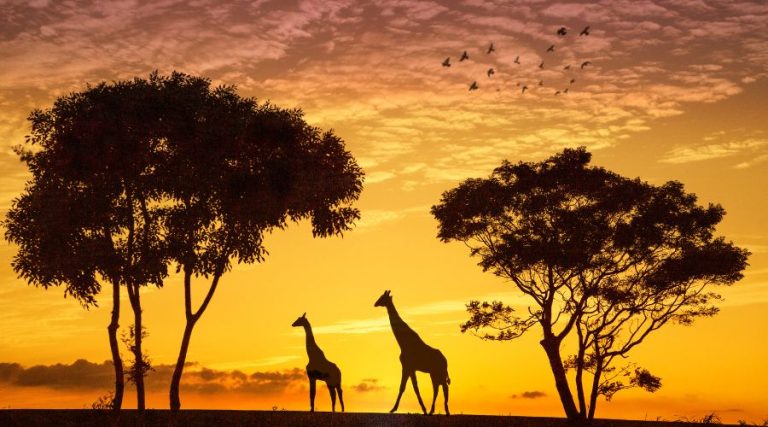How Long Is It Dark in Alaska? A Guide to Alaska’s Polar Nights
Alaska, the largest state in the United States, is known for its stunning natural beauty, abundant wildlife, and unique weather patterns. One of the most common questions people ask about Alaska is how long is it dark there? The answer to this question is not as straightforward as one might think, as the amount of darkness varies depending on the time of year and location within the state.

During the summer months, Alaska experiences long periods of daylight, with some areas experiencing 24-hour daylight for several weeks. However, during the winter months, the opposite is true, with some areas experiencing long periods of darkness. This is due to Alaska’s location near the Arctic Circle, which means that the sun does not rise very high in the sky during the winter months, resulting in shorter days and longer nights.
The amount of darkness in Alaska can vary depending on the location within the state. In some areas, such as Barrow, the sun does not rise for several months during the winter, resulting in almost constant darkness. In other areas, such as Anchorage, the days are shorter during the winter months but there is still some daylight. Overall, the amount of darkness in Alaska is a unique feature of the state that adds to its charm and allure.
Understanding Alaska’s Unique Daylight Patterns

Alaska’s daylight patterns are unique due to its high latitude and location in the far north. The state’s location above the Arctic Circle means that it experiences long periods of darkness and light throughout the year.
Influence of Latitude and Seasons
The amount of daylight in Alaska varies greatly depending on the season and location. During the summer months, areas north of the Arctic Circle experience the phenomenon of the midnight sun, where the sun remains visible for 24 hours a day. Conversely, during the winter months, these same areas can experience up to 67 days of continuous darkness, while the southernmost parts of the state can experience up to 5 hours of daylight.
Phenomenon of the Midnight Sun and Polar Night
The phenomenon of the midnight sun occurs because of the tilt of the Earth’s axis and the position of the sun in relation to the Arctic Circle. On the summer solstice in June, the sun does not set north of the Arctic Circle, resulting in 24 hours of daylight. On the winter solstice in December, the opposite occurs, resulting in the polar night, where the sun does not rise north of the Arctic Circle.
Variations Across Different Alaskan Regions
The amount of daylight varies across different regions of Alaska. In Utqiaġvik (formerly known as Barrow), the northernmost city in America, there is near-constant darkness from mid-to-late November until late January because the sun never rises during that 60-plus-day period. In contrast, Anchorage, Fairbanks, and Juneau experience more daylight during the winter months.
Impact on Daily Life and Activities
Alaskans have adapted to the unique daylight patterns of their state. Many use blackout curtains to sleep during the summer months when the sun is up for long periods of time. Outdoor activities such as fishing and hiking are popular during the summer months when there is ample daylight. Visitors to Alaska should be aware of the unique daylight patterns and plan their activities accordingly.
Overall, Alaska’s daylight patterns are unique and influenced by its high latitude and location in the far north. Understanding these patterns is essential for anyone planning to visit or live in the state.
Tracking Sunlight Changes Throughout the Year

Alaska is known for its extreme daylight changes throughout the year. From the “Land of the Midnight Sun” to the long winter nights, Alaska experiences some of the most dramatic changes in daylight hours in the world. In this section, we will explore how daylight hours change from solstice to solstice, the different types of twilight, and how Alaska compares to other places in terms of darkness.
Measuring Daylight Hours from Solstice to Solstice
The summer solstice, which occurs on June 20 or 21, marks the longest day of the year, and the winter solstice, which occurs on December 21 or 22, marks the shortest day of the year. In Fairbanks, Alaska, the summer solstice can have up to 22 hours of daylight, while the winter solstice can have as little as 3 hours of daylight. These dramatic changes in daylight hours can have a significant impact on energy and climate in Alaska.
Twilight: Civil, Nautical, and Astronomical
Twilight is the period between dawn and sunrise or between sunset and dusk when the sun is below the horizon but its rays illuminate the sky. There are three types of twilight: civil, nautical, and astronomical. Civil twilight occurs when the sun is 6 degrees below the horizon, nautical twilight occurs when the sun is 12 degrees below the horizon, and astronomical twilight occurs when the sun is 18 degrees below the horizon. In Alaska, during the winter solstice, some regions may experience up to 6 hours of civil twilight, while others may not have any daylight at all.
Comparing Alaskan Darkness to Other Places
While Alaska is known for its long winter nights, there are places in the world where the sun never rises for several months. For example, in Norway, the sun never rises in some regions from late November to late January. In New York City, the winter solstice can have up to 9 hours and 15 minutes of daylight, which is significantly more than some regions in Alaska.
Adapting to the Extremes: Energy and Climate Considerations
The extreme changes in daylight hours can have a significant impact on energy and climate in Alaska. During the winter months, Alaskans must rely on artificial light and heat to survive. The transition seasons, spring and fall, can also be challenging as the weather can be unpredictable and extreme.
Experiencing Alaskan Summers and Winters as a Visitor
Visitors to Alaska can experience the extremes of daylight hours by witnessing the “Land of the Midnight Sun” during the summer months and the long winter nights during the winter months. The northern lights, also known as aurora borealis, can also be seen in Alaska during the winter months when the nights are long and dark.
In conclusion, Alaska experiences some of the most dramatic changes in daylight hours in the world. From the long summer days to the long winter nights, Alaskans must adapt to the extremes of daylight hours throughout the year. Visitors to Alaska can witness these extremes and experience the unique beauty of the “Land of the Midnight Sun.”
Frequently Asked Questions

What are the daylight hours by month in Alaska?
The amount of daylight in Alaska varies greatly depending on the month and location within the state. During the summer months of June and July, some areas of Alaska, particularly those north of the Arctic Circle, experience nearly 24 hours of daylight. Conversely, during the winter months of December and January, some areas of Alaska, particularly those north of the Arctic Circle, experience very little daylight, sometimes as little as a few hours per day.
During which months does Alaska experience extended darkness?
Alaska experiences extended periods of darkness during the winter months, particularly in the northernmost parts of the state. In these areas, the sun may not rise above the horizon for several weeks or even months at a time.
How many hours of darkness occur daily in Anchorage, Alaska?
The amount of darkness experienced in Anchorage, Alaska varies depending on the time of year. During the winter months, Anchorage experiences shorter daylight hours, with the sun rising later in the morning and setting earlier in the evening. During the summer months, Anchorage experiences longer daylight hours, with the sun rising earlier in the morning and setting later in the evening.
Is it a myth that Alaska has six months of continuous darkness?
Yes, it is a myth that Alaska experiences six months of continuous darkness. While some areas of Alaska may experience extended periods of darkness during the winter months, the entire state does not experience six months of continuous darkness.
For how many days does Alaska typically stay dark?
The number of days that Alaska stays dark varies depending on the location within the state. In the northernmost parts of the state, such as Barrow, the sun may not rise above the horizon for several weeks or even months at a time during the winter months. In other parts of the state, such as Anchorage, the amount of daylight varies depending on the time of year.
Does Alaska experience a period of 90 days of darkness?
No, Alaska does not experience a period of 90 days of darkness. While some areas of Alaska may experience extended periods of darkness during the winter months, the entire state does not experience 90 days of continuous darkness.






